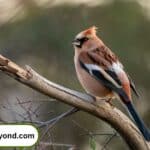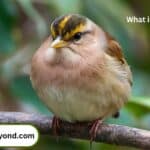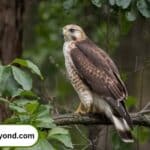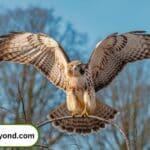In the intricate tapestry of nature, few threads shine as brilliantly as the mockingbird. These feathered virtuosos, with their uncanny ability to mimic sounds, have long captivated our imagination. But what lies beneath the surface of their melodious calls? Let’s embark on a journey to uncover the rich mockingbird symbolism and the profound meaning of these mimics, exploring their versatility, adaptability, and the lessons they offer about resilience, creativity, and harmony.
Masters of Mimicry: The Art of Avian Impersonation
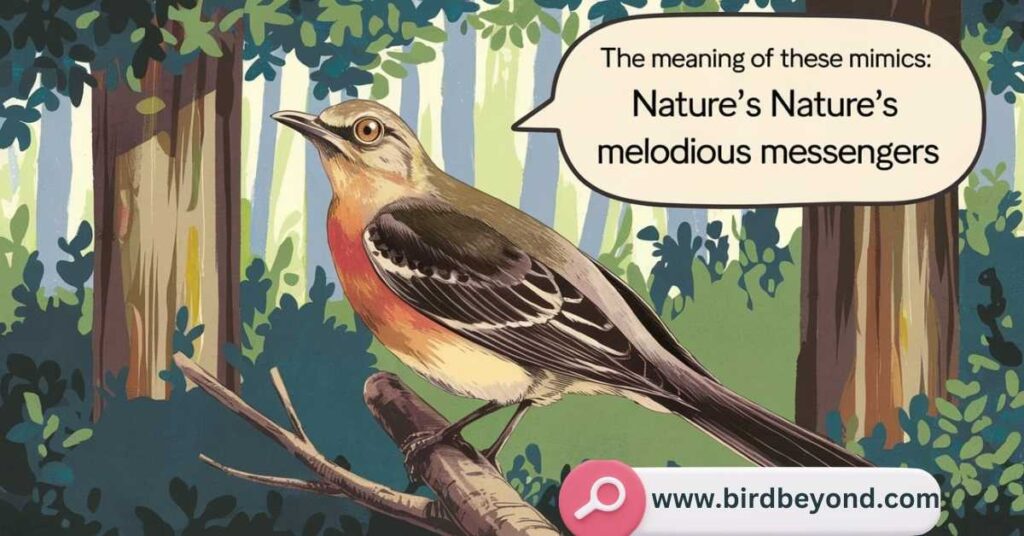
When we delve into mockingbird symbolism, we find that these birds aren’t just talented singers; they’re nature’s ultimate impersonators. The meaning of these mimics goes far beyond mere imitation – it’s a finely honed survival skill that showcases their remarkable adaptability and intelligence.
The Science Behind the Song: Understanding the Meaning of These Mimics
Mockingbirds, particularly the Northern Mockingbird (Mimus polyglottos), can learn and reproduce up to 200 different songs throughout their lifetime. This incredible feat, central to mockingbird symbolism, is made possible by:
- A complex syrinx (voice box) that allows for intricate sound production
- A larger-than-average song control nucleus in the brain
- The ability to learn new sounds throughout their lives, unlike many other birds
Fun Fact: A single mockingbird can mimic up to 50 different species of birds, as well as frogs, cats, dogs, and even mechanical sounds like car alarms! This versatility is a key aspect of mockingbird symbolism – the meaning of these mimics extends to adaptability and resourcefulness.
Evolutionary Advantages: The Deeper Meaning of These Mimics
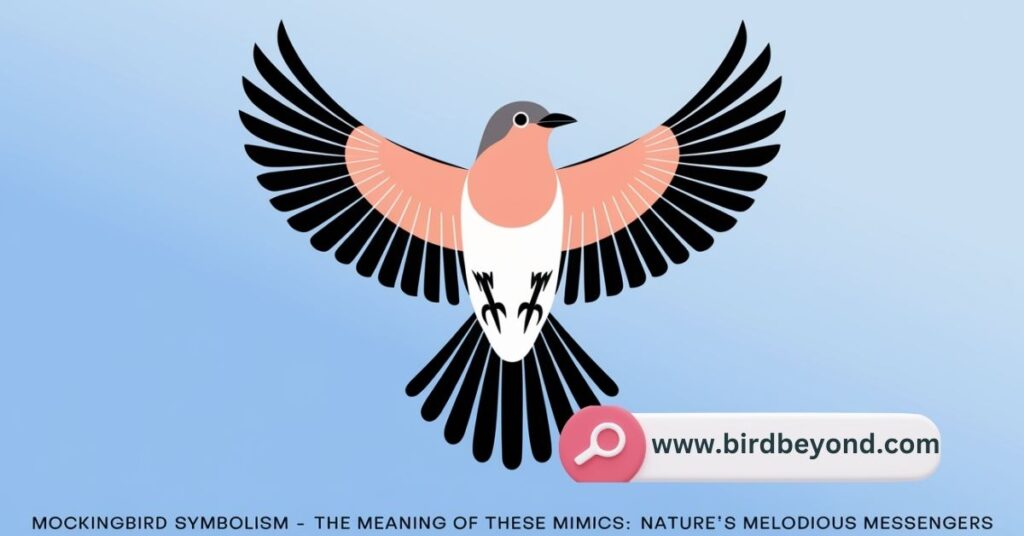
The mockingbird’s talent for imitation isn’t just for show. The symbolism of mockingbirds and the meaning of these mimics serve several crucial purposes in their survival and reproductive success:
- Attracting mates: Mockingbirds with larger repertoires are more likely to attract potential partners, showcasing intelligence and adaptability.
- Territorial defense: By mimicking multiple species, mockingbirds can make their territory seem more crowded and less appealing to intruders.
- Predator confusion: Imitating alarm calls of other species can help scatter potential threats, a clever defensive strategy in mockingbird symbolism.
- Environmental adaptation: The ability to learn and reproduce new sounds allows mockingbirds to quickly adapt to changing environments, including urban areas.
In exploring mockingbird symbolism, we find that these birds are powerful symbols of resilience. The meaning of these mimics extends to their ability to adapt to urban environments and climate change with admirable tenacity.
Thriving in Urban Jungles: Mockingbird Symbolism in Modern Landscapes
Mockingbirds have successfully colonized cities across North America, demonstrating their adaptability by:
- Nesting on human-made structures like building ledges and lampposts
- Incorporating urban sounds into their repertoire, from car alarms to cell phone ringtones
- Adjusting their diet to include human food scraps and urban insects
This urban adaptation is a key aspect of mockingbird symbolism – the meaning of these mimics includes the ability to thrive in diverse and challenging environments.
Climate Change Warriors: Mockingbird Symbolism in a Changing World
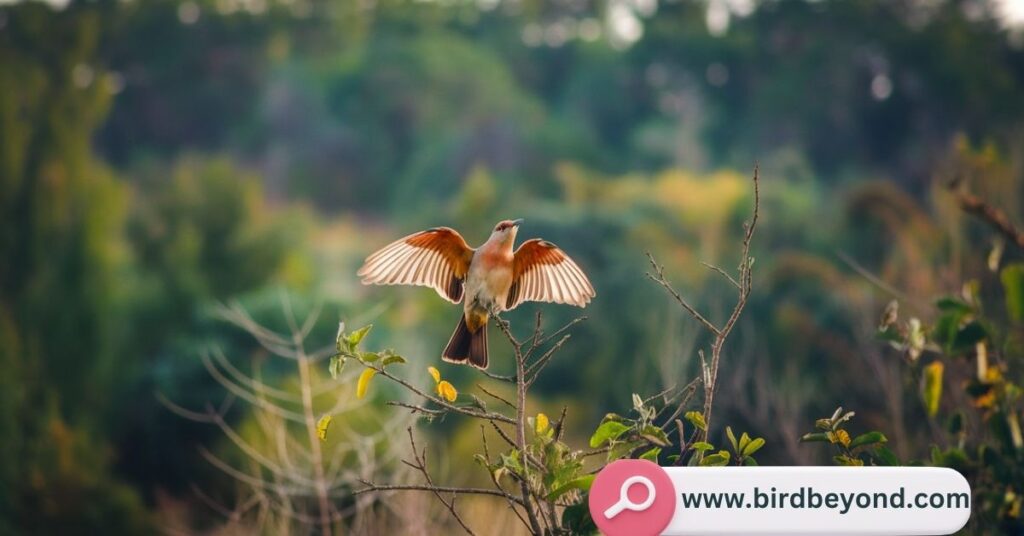
As global temperatures rise and weather patterns shift, mockingbirds are showing signs of adapting:
- Shifting their breeding seasons earlier in the year to coincide with changing insect populations
- Expanding their range northward as temperatures warm
- Altering their migration patterns in response to changing seasonal cues
These adaptations further emphasize the mockingbird symbolism of resilience and flexibility.
The Mockingbird’s Role in Ecosystem Balance: Symbolism in Nature
Beyond their symbolic significance, mockingbirds play a crucial role in maintaining the balance of their ecosystems. This aspect of mockingbird symbolism – the meaning of these mimics in the natural world – highlights the interconnectedness of nature.
Nature’s Pest Control and Gardeners: Practical Mockingbird Symbolism
Mockingbirds contribute to ecosystem health in several ways:
- Controlling insect populations, including many agricultural pests
- Dispersing seeds through their droppings, aiding in plant regeneration
- Pollinating flowers as they feed on nectar
These roles add another layer to mockingbird symbolism, representing balance and harmony in nature.
Indicator Species: Mockingbird Symbolism as Nature’s Warning System
Mockingbirds serve as valuable indicators of environmental health:
- Changes in mockingbird populations can signal shifts in habitat quality or climate conditions
- Their diverse diet makes them sensitive to pesticide use and pollution levels
This aspect of mockingbird symbolism – the meaning of these mimics as environmental indicators – reminds us of our responsibility to protect and preserve natural habitats.
Mockingbird Symbolism – The Meaning of These Mimics in Human Culture
The impact of Mockingbird Symbolism – The Meaning of These Mimics extends far beyond the natural world, leaving an indelible mark on human culture and imagination.
Indigenous American Folklore: Ancient Mockingbird Symbolism
Many Indigenous American tribes view the mockingbird as a sacred creature, imbuing it with deep spiritual significance:
- Cherokee: The mockingbird symbolizes language and storytelling
- Hopi: Mockingbirds represent guidance and survival
- Zuni: In their culture, mockingbird symbolism is associated with courage and protection
Literary Significance: Modern Mockingbird Symbolism
Harper Lee’s novel “To Kill a Mockingbird” catapulted these birds into the spotlight of American literature:
- The mockingbird symbolizes innocence and the senseless destruction of goodness
- It represents characters who are harmed by society despite their inherent goodness
This literary mockingbird symbolism has become a powerful metaphor for social justice and moral integrity.
The Language of Mockingbirds: Decoding the Meaning of These Mimics
Understanding mockingbird vocalizations offers fascinating insights into their behavior and emotions, adding depth to mockingbird symbolism.
Territorial Calls vs. Mating Songs: The Varied Meanings of Mockingbird Mimicry
Mockingbirds use different types of vocalizations for various purposes, each with its own symbolic meaning:
- Territorial calls: Symbolizing protection and boundaries
- Mating songs: Representing courtship and creativity
- Alarm calls: Symbolizing vigilance and community warning systems
Emotional Expression: The Deeper Meaning of Mockingbird Mimicry
Recent studies suggest that Mockingbird Symbolism – The Meaning of These Mimics vocalizations may convey emotional states, adding another layer to mockingbird symbolism:
- Increased song complexity during courtship displays
- Changes in rhythm and pitch during aggressive encounters
- Softer tones when interacting with mates or offspring
This emotional component of mockingbird symbolism hints at a rich inner life, challenging our perceptions of avian intelligence and awareness.
The Enduring Power of Mockingbird Symbolism
As we reflect on the rich mockingbird symbolism and the meaning of these mimics, we’re reminded of the intricate connections between nature and human culture. These remarkable birds embody resilience, creativity, and adaptability—qualities we’d do well to emulate in our own lives.
From their masterful mimicry to their fierce protection of family, mockingbirds offer us valuable lessons:
- Embrace versatility: Like the mockingbird’s diverse repertoire, we can cultivate a wide range of skills and knowledge.
- Adapt to change: Mockingbird symbolism teaches us the importance of flexibility and innovation in the face of challenges.
- Stand up for what matters: The protective nature in mockingbird symbolism reminds us to defend our values and loved ones.
- Find harmony in diversity: Just as mockingbirds blend various songs, we can seek balance and unity in our diverse world.
As we move forward, let’s carry the song of mockingbird symbolism in our hearts—a melody of resilience, creativity, and hope. By appreciating and protecting these feathered mimics, we not only ensure their survival but also preserve a piece of nature’s magic for generations to come. The meaning of these mimics extends far beyond their beautiful songs, offering us a blueprint for living in harmony with our ever-changing world.
Masters of Mimicry: The Art of Avian Impersonation
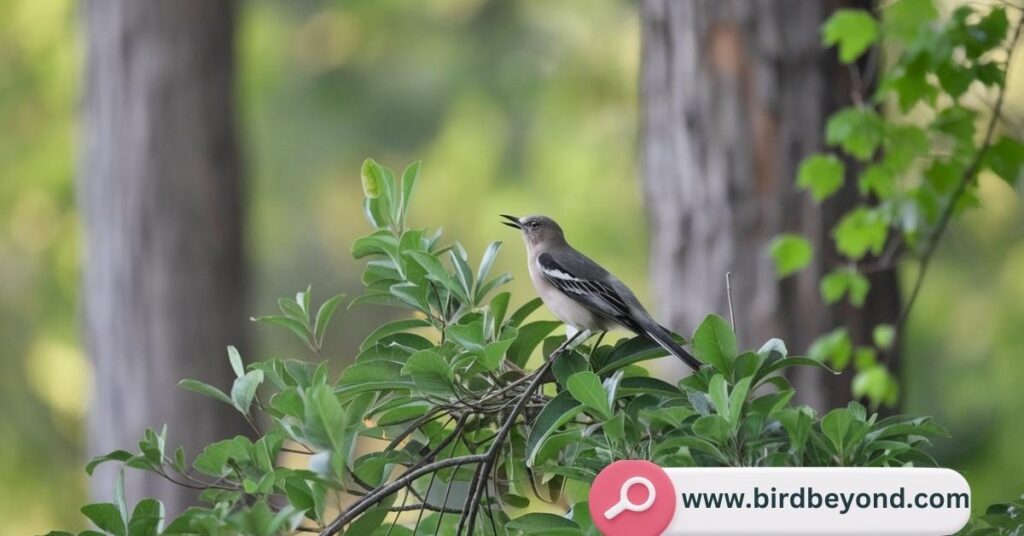
Mockingbird Symbolism – The Meaning of These Mimics aren’t just talented singers; they’re nature’s ultimate impersonators. Their ability to mimic sounds isn’t merely a party trick—it’s a finely honed survival skill that showcases their remarkable adaptability and intelligence.
The Science Behind the Song
Mockingbirds, particularly the Northern Mockingbird (Mimus polyglottos), can learn and reproduce up to 200 different songs throughout their lifetime. This incredible feat is made possible by:
- A complex syrinx (voice box) that allows for intricate sound production
- A larger-than-average song control nucleus in the brain
- The ability to learn new sounds throughout their lives, unlike many other birds
Fun Fact: A single mockingbird can mimic up to 50 different species of birds, as well as frogs, cats, dogs, and even mechanical sounds like car alarms!
The mockingbird’s brain is a marvel of avian neuroscience. Studies have shown that the areas responsible for song learning and production are proportionally larger in mockingbirds compared to other songbirds. This enhanced neural architecture allows them to not only memorize a vast array of sounds but also to reproduce them with astounding accuracy.
Evolutionary Advantages of Mimicry
The mockingbird’s talent for imitation isn’t just for show. It serves several crucial purposes in their survival and reproductive success:
- Attracting mates: Mockingbirds with larger repertoires are more likely to attract potential partners. Female mockingbirds often prefer males who can perform a wider variety of songs, as it’s an indicator of intelligence and adaptability.
- Territorial defense: By mimicking multiple species, mockingbirds can make their territory seem more crowded and less appealing to intruders. This clever acoustic illusion helps them protect their nesting sites and feeding grounds without expending excessive energy in physical confrontations.
- Predator confusion: Imitating alarm calls of other species can help scatter potential threats. By “speaking the language” of various birds, mockingbirds can effectively communicate danger across species boundaries, creating a neighborhood watch system in the avian world.
- Environmental adaptation: The ability to learn and reproduce new sounds allows mockingbirds to quickly adapt to changing environments, including urban areas where they encounter novel sounds.
Record-Breaking Repertoires
Some mockingbirds have achieved legendary status for their vocal abilities, pushing the boundaries of what we thought possible in avian vocalization:
| Bird Name | Location | Number of Unique Sounds |
|---|---|---|
| “Charlie” | San Diego Zoo | 297 |
| “Mockingbird Mike” | Central Park, NYC | 203 |
| “Echo” | Florida Everglades | 189 |
These extraordinary individuals remind us of the boundless potential for learning and adaptation in nature. They serve as avian ambassadors, bridging the gap between the human and natural worlds through their remarkable abilities.
Mockingbirds as Symbols of Resilience
In the face of environmental challenges, Mockingbird Symbolism – The Meaning of These Mimics have shown remarkable resilience, adapting to urban environments and climate change with admirable tenacity. Their ability to thrive in diverse habitats offers valuable lessons in adaptability and perseverance.
Thriving in Urban Jungles
Mockingbirds have successfully colonized cities across North America, demonstrating their adaptability by:
- Nesting on human-made structures like building ledges and lampposts
- Incorporating urban sounds into their repertoire, from car alarms to cell phone ringtones
- Adjusting their diet to include human food scraps and urban insects
This urban adaptation isn’t without its challenges. Mockingbirds in cities face increased exposure to pollutants, higher predation rates from feral cats and rats, and competition for limited green spaces. Yet, they persist and often thrive, showcasing their remarkable resilience.
Climate Change Warriors
As global temperatures rise and weather patterns shift, mockingbirds are showing signs of adapting:
- Shifting their breeding seasons earlier in the year to coincide with changing insect populations
- Expanding their range northward as temperatures warm
- Altering their migration patterns in response to changing seasonal cues
Case Study: In a 2018 study published in the Journal of Avian Biology, researchers found that Northern Mockingbirds in Florida were nesting an average of 5 days earlier than they did in the 1960s, likely in response to warmer spring temperatures. This shift allows them to better synchronize their breeding with peak food availability for their chicks.
Lessons in Perseverance
The mockingbird’s ability to thrive in changing environments offers valuable lessons for humans:
- Flexibility is key: Like mockingbirds, we must be willing to adapt our behaviors and strategies in the face of change. This might mean learning new skills, embracing new technologies, or adjusting our daily routines to meet evolving challenges.
- Creativity breeds survival: Finding innovative solutions to new challenges is crucial for long-term success. Mockingbirds’ ability to incorporate new sounds into their repertoire mirrors the importance of creative problem-solving in human societies.
- Resilience is a process: Adapting to change takes time and persistence, but the rewards are worth the effort. Mockingbirds didn’t become urban dwellers overnight; their success is the result of generations of gradual adaptation.
- Diversity is strength: The mockingbird’s varied diet and habitat preferences showcase the importance of versatility. In our own lives, developing a diverse skill set and maintaining a broad perspective can help us navigate uncertain times.
The Mockingbird’s Role in Ecosystem Balance
Beyond their symbolic significance, mockingbirds play a crucial role in maintaining the balance of their ecosystems. Their interactions with other species and the environment highlight the interconnectedness of nature.
Nature’s Pest Control and Gardeners
Mockingbirds contribute to ecosystem health in several ways:
- Controlling insect populations: They consume a variety of insects, including many that are considered agricultural pests. This natural pest control helps maintain healthy plant populations and can benefit human agriculture.
- Dispersing seeds: As they feed on berries and fruits, Mockingbird Symbolism – The Meaning of These Mimics spread seeds through their droppings, aiding in plant regeneration and maintaining biodiversity in their habitats.
- Pollinating flowers: While not primary pollinators like bees or hummingbirds, mockingbirds do contribute to pollination as they feed on nectar, helping to maintain healthy plant populations.
Interactions with Other Species
Mockingbirds engage in complex relationships with other wildlife:
- Cooperative defense: They often team up with other bird species to mob predators, creating a collective defense system that benefits multiple species in their ecosystem.
- Competitive mimicry: By imitating other birds’ calls, they can sometimes trick competitors into leaving an area, showcasing the complex social dynamics in avian communities.
- Mutualistic relationships: Some plants have evolved to produce berries that are particularly attractive to mockingbirds, ensuring effective seed dispersal.
Indicator Species: Nature’s Warning System
Mockingbirds serve as valuable indicators of environmental health:
- Changes in mockingbird populations can signal shifts in habitat quality or climate conditions. Their presence or absence in an area can provide insights into the overall health of an ecosystem.
- Their diverse diet makes them sensitive to pesticide use and pollution levels. Studying Mockingbird Symbolism – The Meaning of These Mimics health can offer clues about environmental contamination and its effects on wildlife.
“The mockingbird is nature’s own iPod, programmed with the soundtrack of its environment. When that soundtrack changes, we’d do well to listen.” – Dr. Eliza Peréz, Ornithologist
This quote beautifully encapsulates the mockingbird’s role as both a reflection of its environment and a harbinger of change. By paying attention to mockingbird populations and behaviors, we gain valuable insights into the health of our shared ecosystems.
Mockingbirds in Human Culture
The mockingbird’s impact extends far beyond the natural world, leaving an indelible mark on human culture and imagination. From ancient folklore to modern literature, these birds have inspired and intrigued us for generations.
Indigenous American Folklore and Traditions
Many Indigenous American tribes view the mockingbird as a sacred creature, imbuing it with deep spiritual significance:
- Cherokee: The mockingbird is seen as a teacher of languages and a storyteller. In Cherokee lore, the mockingbird taught humans how to speak, reflecting its diverse vocal abilities.
- Hopi: They believe mockingbirds can lead them to water sources in the desert, highlighting the bird’s association with survival and guidance.
- Zuni: Mockingbirds are associated with courage and protection. In Zuni tradition, the mockingbird is often depicted as a guardian figure.
These cultural beliefs reflect the mockingbird’s real-life attributes: its vocal versatility, adaptability, and protective nature. They also showcase how closely Indigenous cultures observed and respected the natural world around them.
Literary Significance: To Kill a Mockingbird and Beyond
Harper Lee’s Pulitzer Prize-winning novel “To Kill a Mockingbird” catapulted the bird into the spotlight of American literature:
- The mockingbird symbolizes innocence and the senseless destruction of goodness. In the novel, to kill a mockingbird is considered a sin because the birds do nothing but make beautiful music for people to enjoy.
- It represents characters like Tom Robinson and Boo Radley, who are harmed by society despite their inherent goodness. This metaphor has become a powerful commentary on social injustice and the loss of innocence.
The impact of Lee’s novel has been so profound that for many people, the mockingbird has become synonymous with innocence and moral integrity.
Other Literary Appearances:
- Walt Whitman’s poem “Out of the Cradle Endlessly Rocking” features a mockingbird as a central figure, representing love, loss, and the power of music.
- Ambrose Bierce’s short story “An Occurrence at Owl Creek Bridge” uses the song of a mockingbird as a poignant detail in its narrative of a Civil War execution.
- Charles Dickens’ “Barnaby Rudge” includes a talking raven named Grip, who is described as having learned to imitate human speech from mockingbirds.
State Birds and Cultural Icons
The mockingbird’s cultural significance is officially recognized in several U.S. states:
- State bird of Arkansas, Florida, Mississippi, Tennessee, and Texas
- Featured on the Florida state quarter, further cementing its place in American iconography
This official recognition speaks to the mockingbird’s widespread appeal and its deep connection to regional identities across the southern United States.
The Language of Mockingbirds: Decoding Their Chatter
Understanding mockingbird vocalizations offers fascinating insights into their behavior and emotions. Their complex language is a window into the sophisticated communication systems of the avian world.
Territorial Calls vs. Mating Songs
Mockingbirds use different types of vocalizations for various purposes:
- Territorial calls: Short, sharp notes repeated in quick succession. These calls are designed to assert dominance over an area and warn off potential intruders.
- Mating songs: Longer, more complex melodies with frequent changes in pitch and rhythm. Male mockingbirds often sing throughout the night during breeding season, showcasing their vocal prowess to attract mates.
- Alarm calls: Harsh, raspy sounds to warn of predators. These calls can vary depending on the type of threat, with different vocalizations for aerial predators versus ground-based ones.
Regional “Dialects” Among Mockingbird Populations
Like human languages, mockingbird songs can vary by region, creating a fascinating tapestry of avian dialects:
- Urban mockingbirds often incorporate more mechanical sounds, mimicking car alarms, cell phones, and other city noises.
- Coastal populations may mimic seabirds more frequently, reflecting their unique auditory environment.
- Mountain-dwelling mockingbirds might have songs adapted for long-distance transmission, with longer, clearer notes that carry farther in the thin air.
These regional variations not only showcase the mockingbird’s adaptability but also provide valuable data for researchers studying the effects of urbanization and habitat changes on wildlife.
Emotional Expression Through Song
Recent studies suggest that mockingbird vocalizations may convey emotional states, adding another layer of complexity to their communication:
- Increased song complexity during courtship displays, possibly indicating excitement or eagerness.
- Changes in rhythm and pitch during aggressive encounters, suggesting agitation or stress.
- Softer, more melodious tones when interacting with mates or offspring, potentially conveying affection or reassurance.
This emotional component of mockingbird vocalizations hints at a rich inner life, challenging our perceptions of avian intelligence and awareness.
Protective Parents: The Fierce Defenders of the Avian World
Mockingbirds are renowned for their fierce protection of their nests and young, a behavior that has earned them both admiration and occasional wariness from humans.
Nesting Habits and Family Structures
Mockingbird families exhibit strong bonds and cooperative behaviors:
- Monogamous pairs that often mate for life, showcasing a level of loyalty that resonates with human observers.
- Both parents participate in nest-building and chick-rearing, demonstrating a cooperative approach to parenting.
- Multiple broods per season, with up to 4 clutches of eggs, highlighting their reproductive resilience.
The dedication of mockingbird parents to their offspring is truly remarkable. They will tirelessly defend their nests, feed their young, and teach them the skills needed to survive in a complex world.
Strategies for Deterring Predators
Mockingbirds employ various tactics to protect their nests:
- Dive-bombing: Swooping down on potential threats, including much larger animals and even humans. This bold behavior showcases the mockingbird’s fearlessness in defense of its family.
- Distraction displays: Feigning injury to lure predators away from the nest, a clever tactic that demonstrates the mockingbird’s intelligence and self-sacrificing nature.
- Cooperative defense: Teaming up with neighboring mockingbirds to mob larger predators, illustrating the power of community in the face of threats.
These defensive behaviors, while sometimes intimidating to humans, are a testament to the mockingbird’s parental dedication and survival instincts.
Human-Mockingbird Interactions and Resolutions
As mockingbirds adapt to urban environments, interactions with humans can sometimes lead to challenges:
Problem: Defensive behavior towards humans during nesting season can lead to conflicts in parks, gardens, and urban areas.
Solution: Educating the public about mockingbird behavior and promoting coexistence strategies is key to harmonious living.
Tips for Peaceful Coexistence:
- Avoid approaching known nest sites during breeding season.
- Wear a hat or carry an umbrella in areas with territorial mockingbirds to discourage dive-bombing.
- Plant native species to provide natural food sources and nesting materials, creating a more attractive habitat for mockingbirds away from high-traffic areas.
By understanding and respecting mockingbird behavior, we can create environments where both humans and these remarkable birds can thrive side by side.
Mockingbirds as Muses: Inspiring Creativity Across Art Forms
The mockingbird’s ability to mimic and create new sounds has long inspired artists across various mediums, making it a powerful symbol in the world of creative expression.
Music: From Folk Songs to Classical Compositions
Mockingbirds have left their mark on the world of music, influencing composers and songwriters across genres:
- Folk song “Listen to the Mockingbird” (1855), which became a popular Civil War tune, capturing the bird’s association with Southern culture and nostalgia.
- Classical piece “Le Merle Moqueur” by Louis Moreau Gottschalk, a piano composition that mimics the varied calls of the mockingbird, showcasing its influence on formal music.
- Contemporary works like “Mockingbird” by Eminem and “Hush, Hush, Sweet Charlotte” by Patti Page, demonstrating the bird’s enduring presence in popular culture.
These musical tributes not only celebrate the mockingbird’s vocal abilities but also use it as a metaphor for themes like freedom, resilience, and the power of voice.
Visual Arts: Paintings, Sculptures, and Beyond
Artists have captured the mockingbird’s essence in various forms, often using it as a symbol of nature’s beauty and complexity:
- John James Audubon’s detailed illustrations in “Birds of America” set the standard for ornithological art and helped cement the mockingbird’s place in the American natural history canon.
- Modern wildlife sculptures by artists like Tim Shinabarger bring the mockingbird to life in three dimensions, capturing its alert posture and expressive nature.
- Street art and murals featuring mockingbirds in urban settings, often used to comment on themes of adaptability and resilience in city environments.

William Henry is a distinguished blogger with a flair for avian storytelling. With a wealth of experience, he delivers captivating insights and expert knowledge to Bird Beyond. William’s passion for birds and his engaging writing style make him a standout voice in the birdwatching community, offering readers both valuable information and delightful narratives.

